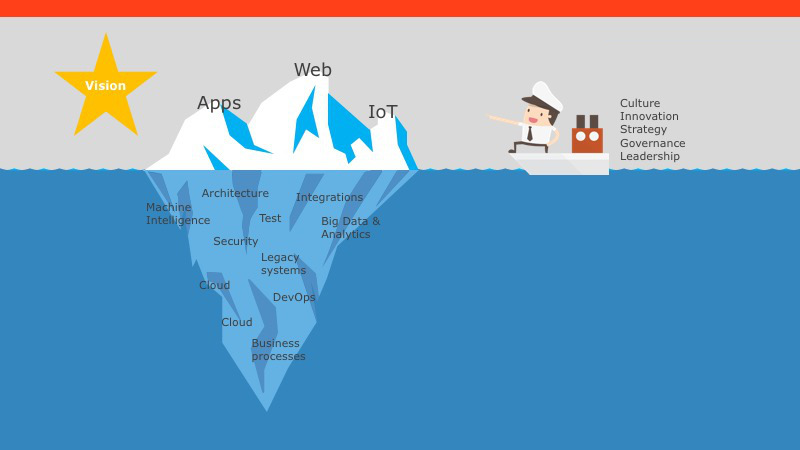WHY YOUR DIGITAL TRANSFORMATION JOURNEY COULD BE THE TITANIC?
March 28, 2017
Digital transformation is everywhere. Transform or die. That’s what they’re telling you, right? Well, it’s true, at least most of it. Depending which industry you’re in it’s going to affect you sooner or later.
In this, digital transformation is the world’s greatest sales pitch at the moment. Because if you don’t do it, someone else will and eventually out-innovate you, and you’ll go bankrupt. Therefore, all the services and tools that were there yesterday, to sustain your business models of old, are now instead encouraging you to adopt them to drive that transformation journey instead – great!
Build that new website. Ship that App. Create your digital workforce. Click that link (bait?) and you’ll be on your way!
Here’s the thing: there’s multiple dimensions to a digital transformation journey. The need to go digital is not a lie – the digital cake is real this time. We have already seen a couple of companies go the way of the dodo because they didn’t adapt.
I’ve written quite the few e-mails trying to explain why digital transformation is important and how business’ should approach it. We’re at a point in history where everyone appears very anxious – the immediacy in the need for change is apparent and the solutions should be quick and well on their way to the market.
However, and this is important: if you dive in head first on your journey and steam away with your ship (company) towards your (assumed) transformation destination you could run aground – or worse, into an iceberg.
To avoid disaster you first need a direction. A vision, if you will, of where you and your company is headed. Ask yourself a fundamental question: what does the digital version of your company look like? This vision of your business – not technology – should build on your strengths and engage employees. Give your vision enough leeway to be adaptable as you go – picture it as a guiding star on the horizon. And let customer obsession be at the very center, where the star burns at its brightest.
Ask yourself a fundamental question: what does the digital version of your company look like?
Second, create a governance structure to make the decisions necessary as you cruise on the seas of digital. I would make the analogy of a captain here, but that would imply central and top down governance, which might not be necessary. However, what both navigates and powers the ship (company) on your digital transformation is absolutely essential: communications, culture, strategy, governance, leadership.
Third, and this is where most companies get it wrong, don’t focus only on what you – and your customers – see and interact with, the digital touch points, if you will. These are often the usual suspects: Apps, Websites, IoT-devices, and so forth. This may also be the only focus when a company attempts digital transformation – ignoring both vision and steering.
The touch points can also be just the tip of the iceberg. If you don’t consider what lies beneath the surface you might be in trouble. DevOps, Cloud, Innovation, Legacy systems (integrations!), Business processes, and so on.
Consider these things three of your digital transformation journey: why are you on this journey, what is changing and how do you go about it?

Thanks for reading.

 English | EN
English | EN 